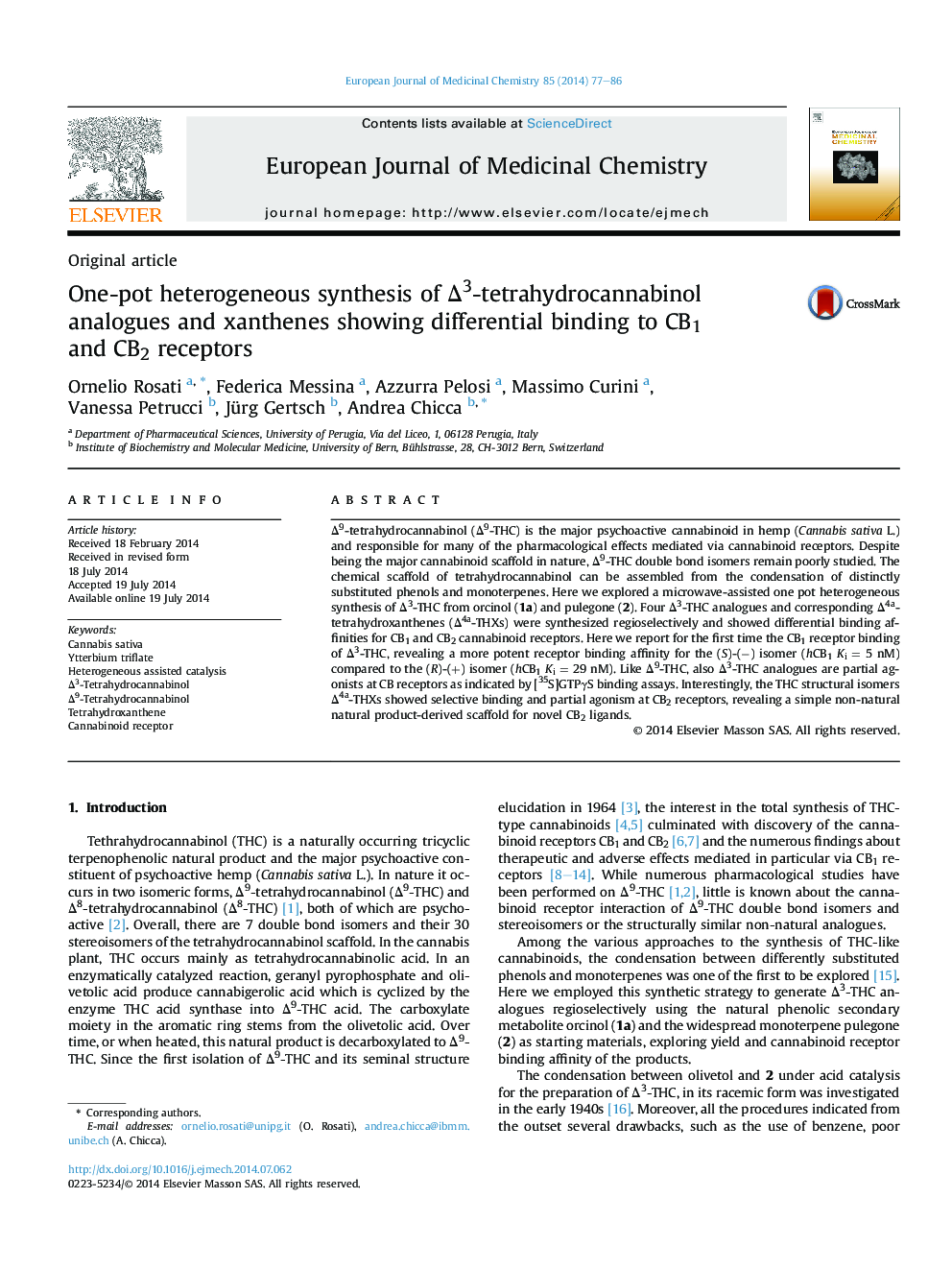| Article ID | Journal | Published Year | Pages | File Type |
|---|---|---|---|---|
| 1392315 | European Journal of Medicinal Chemistry | 2014 | 10 Pages |
•Improved method for Δ3-THCs synthesis mediated by heterogeneous catalysis and microwave.•Ytterbium Triflate/Ascorbic Acid (YTACA) association as LBA catalytic system.•(R)-(+) and (S)-(−) Δ3-THC isomers showed potent binding properties and partial agonism at CB1 and CB2 receptors.•Δ4a-tetrahydroxanthenes (Δ4a-THXs) showed moderate but selective binding properties and partial agonism at CB2 receptors.
Δ9-tetrahydrocannabinol (Δ9-THC) is the major psychoactive cannabinoid in hemp (Cannabis sativa L.) and responsible for many of the pharmacological effects mediated via cannabinoid receptors. Despite being the major cannabinoid scaffold in nature, Δ9-THC double bond isomers remain poorly studied. The chemical scaffold of tetrahydrocannabinol can be assembled from the condensation of distinctly substituted phenols and monoterpenes. Here we explored a microwave-assisted one pot heterogeneous synthesis of Δ3-THC from orcinol (1a) and pulegone (2). Four Δ3-THC analogues and corresponding Δ4a-tetrahydroxanthenes (Δ4a-THXs) were synthesized regioselectively and showed differential binding affinities for CB1 and CB2 cannabinoid receptors. Here we report for the first time the CB1 receptor binding of Δ3-THC, revealing a more potent receptor binding affinity for the (S)-(−) isomer (hCB1Ki = 5 nM) compared to the (R)-(+) isomer (hCB1Ki = 29 nM). Like Δ9-THC, also Δ3-THC analogues are partial agonists at CB receptors as indicated by [35S]GTPγS binding assays. Interestingly, the THC structural isomers Δ4a-THXs showed selective binding and partial agonism at CB2 receptors, revealing a simple non-natural natural product-derived scaffold for novel CB2 ligands.
Graphical abstractFigure optionsDownload full-size imageDownload as PowerPoint slide
